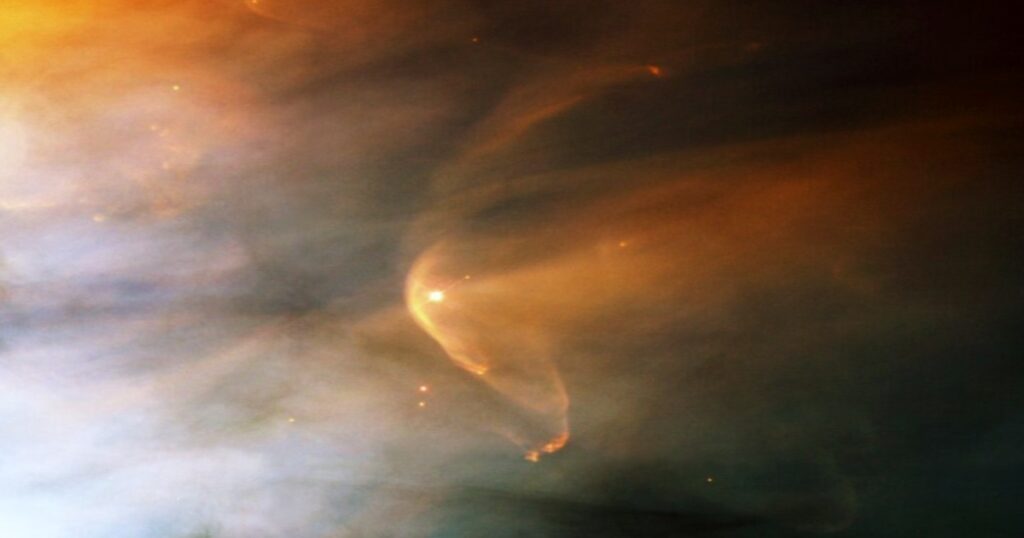Space News: On April 12, 2024, Three Sun-like Stars’ Stellar Winds Found for the First Time:
By observing the X-ray emission from the astrospheres of three Sun-like stars, a multinational research team has successfully discovered stellar winds from these stars for the first time and has established limits on the mass loss rate of the stars through their stellar.

This research is a breakthrough because it’s the first time scientists have directly observed the winds of sun-like stars. They did this by detecting X-rays emitted from the stars’ astrospheres, which are giant bubbles of hot gas created by the stellar winds interacting with the surrounding space.
This allowed them to estimate how quickly these stars are losing mass through these winds.
High Mass Loss:
The scientists noticed that the stellar winds of all three of the stars they investigated were shedding mass far more quickly than that of our Sun. Three stars were losing mass more quickly than the Sun: one was losing mass 67 times faster, another 16 times faster, and the slowest loser was still losing mass 10 times faster.
Method:
Seeing the X-ray emissions was crucial to this finding. Astrospheres are very hot gas bubbles that are created near stars by stellar winds. Faint X-rays are produced when these heated bubbles crash with the interstellar medium, which is the thin layer of gas and dust between stars.
Through the use of observatories like ESA’s XMM-Newton, scientists have been able to investigate this X-ray emission and infer the presence of stellar winds.
Importance:
Comprehending stellar winds is essential to the research of planetary formation and star development. These winds have the power to modify and even completely remove a system’s planets’ atmospheres. Furthermore, this study offers important information to enhance stellar wind models for sun-like stars.
What is the meaning of Sun-Like Stars?
Scientists call stars like our Sun “sun-like stars.” These aren’t exact replicas, but they share key features. Imagine a star with a mass similar to our Sun, which is roughly like 1.4 Jupiters. It needs to be hot enough to fuse hydrogen in its core, like the Sun’s scorching 5,500 degrees Celsius surface temperature.
Most importantly, it should be in its prime working stage, the main sequence phase where stars like ours spend most of their lives. Sun-like stars are like cosmic cousins, sharing a similar chemical makeup of mostly hydrogen and helium. Studying these stars helps us understand how our Sun behaves, how stars evolve over time, and even how planets form around them.
What are Stellar Winds?
Stellar winds are essentially powerful streams of charged particles (mostly protons and electrons) constantly flowing outwards from a star’s upper atmosphere. Imagine a giant, hot breeze blowing off the star’s surface.
Hot and Energetic: The scorching temperatures in a star’s outer layers (corona) cause these particles to move at incredibly high speeds, reaching thousands of kilometers per second.
Two Driving Forces: There are two main mechanisms that propel these stellar winds:
Radiation Pressure: The intense radiation from the star’s core pushes outwards on the particles in its atmosphere, causing them to gain energy and escape the star’s gravity.
Magnetic Fields: A star’s magnetic field can interact with charged particles, accelerating them and contributing to the overall wind.
Impact on Stars and Planets: Stellar winds can have a significant impact on a star and its surrounding environment. Over long periods, they can slowly cause the star to lose mass. Additionally, these winds can interact with planets in the system, potentially stripping away their atmospheres or influencing their formation.
Conclusion:
Scientists first observed winds from sun-like stars using X-ray emissions. These stars lose mass 10-67x faster than our Sun, impacting planetary formation & evolution. This discovery refines stellar wind models & deepens our understanding of star behavior.
